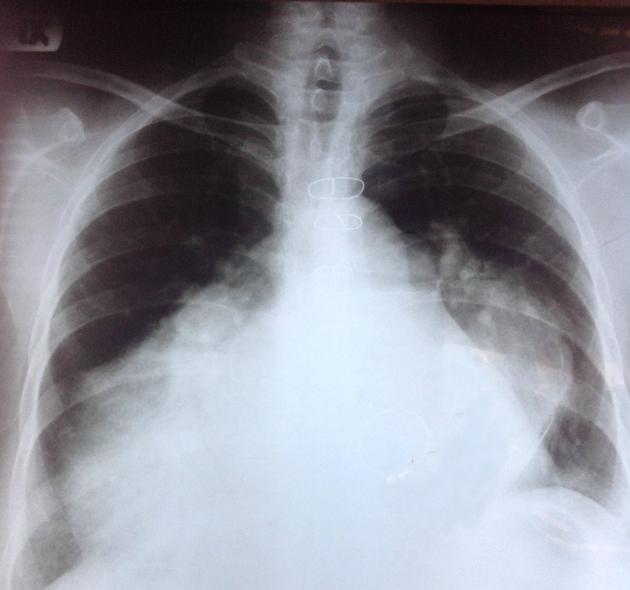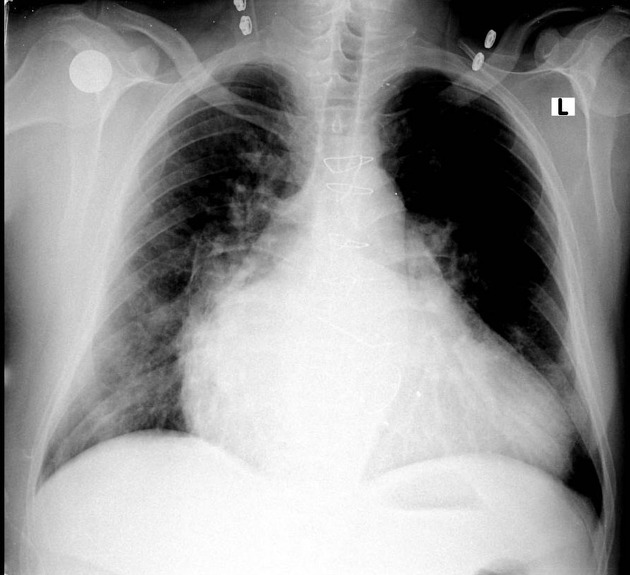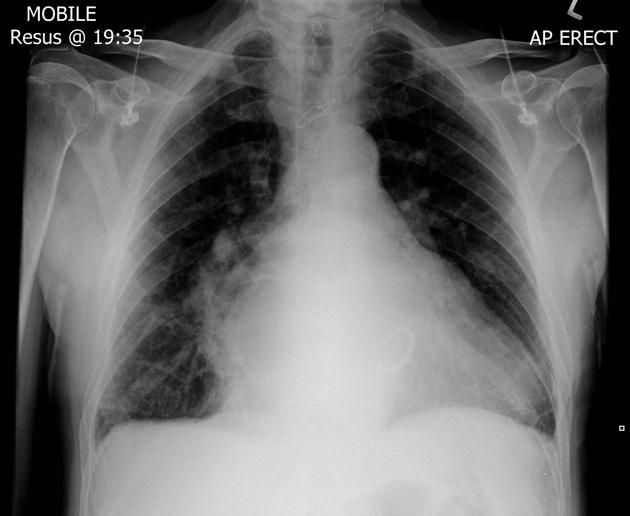rheumatic heart disease



 nicht verwechseln mit: chronic rheumatoid heart disease
nicht verwechseln mit: chronic rheumatoid heart diseaseRheumatic heart disease (not to be confused with rheumatoid heart disease) may refer to either the acute cardiac involvement or chronic cardiac sequelae following rheumatic fever. Carditis is a major Jones criterion of rheumatic fever.
Epidemiology
Risk factors include:
- socioeconomic factors eg; overcrowding, poverty, poor access to healthcare
- recurrent group A streptococcus infections
- an increased prevalence in females has been reported
Pathology
Initial inflammatory events are precipitated by a group A Streptococcus pyogenes infection that causes a type 2 hypersensitivity reaction where antibodies to the bacteria exhibit molecular mimicry to human tissues. The presence of Aschoff cells is a histological diagnostic feature.
Myocardial involvement
The Initial acute phase may result in a myocarditis which may progress to a dilated cardiomyopathy as later sequelae.
Pericardial involvement
Initially results in a pericardial inflammation and an effusion. A fibrinous pericarditis can occur. Pericardial calcification may occur as a later sequelae.
Valvular involvement
Valvular involvement is related to an endocarditis and can result in either stenosis and/or insufficiency, which can manifest either acutely or several years to decades after the initial onset of rheumatic fever. Most commonly the mitral valve is affected, producing a stenosis in later disease . Aortic regurgitation can also occur. Pathologically commissural fusion of valve leaflets is a characteristic feature.
Valvular disease can develop after either a single severe episode of acute rheumatic fever or after multiple episodes .
Radiographic features
Plain radiograph
- pericardial calcification
- pulmonary edema
- pulmonary ossification: due to mitral valve disease
- cardiomegaly
- global cardiomegaly from a dilated cardiomyopathy
- left atrial enlargement (particularly appendage) from mitral valve disease
- valvular calcification
- diffuse alveolar hemorrhage can result from severe mitral stenosis
CT
- valvular or pericardial calcification
- dilated ventricles and atria
MRI
- dilated cardiac chambers
- pericardial inflammation
- pericardial effusion
- myocardial inflammation
Siehe auch:
- Perikarderguss
- Lungenödem
- Dilatative Kardiomyopathie
- fibrinous pericarditis
- Pericarditis calcarea
- rheumatic fever
- chronic rheumatoid heart disease
- diffuse Alveolarblutung
und weiter:

 Assoziationen und Differentialdiagnosen zu rheumatic heart disease:
Assoziationen und Differentialdiagnosen zu rheumatic heart disease:




